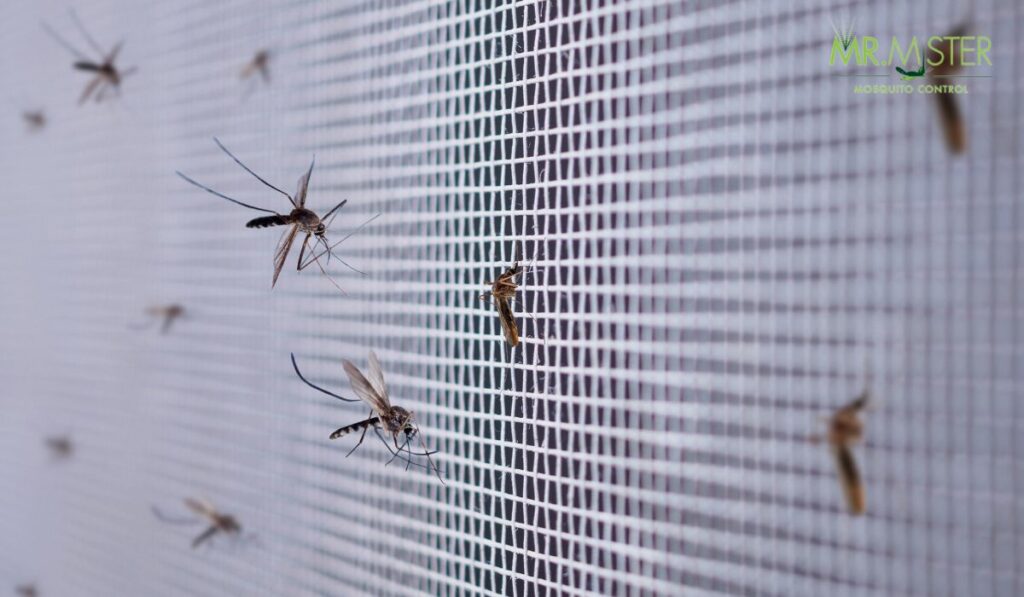Understanding Different Types of Mosquitoes
It may come as a surprise, but there are literally thousands of different species of mosquitoes out there.
While the biggest culprits are known for feeding on our blood and spreading dangerous diseases, some of them prefer feeding on other animals, and some rarer varieties don’t even feed on blood at all.
As the mosquito control professionals in Atlanta, we strive to keep our customers as educated as possible on mosquitoes and the threats they cause. With that being said, let’s break down the most common genus of mosquitoes in order to gain a better understanding of these dangerous pests:
Aedes Mosquito
The aedes mosquito was originally found in tropical areas, but have recently been spotted everywhere except Antarctica.
These mosquitoes in particular are notorious vectors for viral infections, including dengue fever, chikungunya, West Nile, and the increasingly threatening Zika virus.
The two most common species are the Aedes albopictus (also known as the Asian Tiger Mosquito) and the Aedes aegypti (also referred to as the Yellow Fever Mosquito).
Anopheles Mosquito
Also known as Marsh mosquitoes, the Anopheles mosquito has around 460 different species.
Though, the most prominent species is the Anopheles gambiae, which is well known for both carrying and spreading the deadly disease known as malaria.
In fact, malaria is the number two cause of death across the globe, and is responsible for killing hundreds of millions of people worldwide.
Culex
Also referred to as the House mosquito, the Culex genus contains several species that are vectors of encephalitis, West Nile, and Rift Valley fever (just to name a few).
This genus is found everywhere except the extreme North, and are the most common mosquito that are found in major US cities.
Culiseta
The Culiseta are an interesting genus, as they are one of the only mosquitoes to have adapted to the cold, and are found everywhere except South America.
Most species tend to bite mammals and birds, and their larvae is generally found in streams, ditches, rock pools, and ponds.
Mansonia
This genus is bigger than most of its mosquito counterparts, and is brown or black with sparkling legs and wings.
Mansonia are found in most parts of the world, and are known to transmit encephalitis.
One important trait of Mansonia mosquitoes is that they prefer to bite in the evening.
Psorophora
With a realm of species, Psorophora vary in size, from small to very big, and are mostly found in tropical areas of North and South America.
These mosquitoes are vectors for both encephalitis and Ilheus virus and are sometimes referred to as flood-water mosquitoes, due to the fact that they like laying their eggs on mud.
Toxorhynchites
Also referred to as the Elephant mosquito, the Toxorhynchites doesn’t consume blood.
Just like their male counterparts, the females feed on plant nectar, and don’t pose any risk to humans.
Interestingly enough, their larvae actually prey on the larvae of other mosquitoes, which is the reason it has been suggested that Toxorhynchites could be introduced in areas they don’t generally inhabit as a way to help fight dengue.
We hope you’re finding our blog helpful and informative!
For more information on what makes Mr. Mister is a premier provider of innovative mosquito solutions and techniques click here.
Or, visit our Testimonials page to see what some of our satisfied customers are saying.
Mr. Mister Mosquito Control
4016 Flowers Rd #400
Atlanta, GA 30360
(404) 941-0720
Conclusion:
In conclusion, the world of mosquitoes is vast and varied, with thousands of different species.
While some mosquitoes are notorious for their blood-feeding habits and their role in spreading diseases, others have unique behaviors and do not pose a risk to humans.
Understanding the diversity of mosquitoes is crucial for effective mosquito control and protecting our communities from the threats they pose.
Frequently Asked Questions (FAQs):
What is the most dangerous mosquito species to humans?
The Aedes mosquito genus, particularly Aedes aegypti and Aedes albopictus, is known for spreading viral infections such as Zika, dengue fever, chikungunya, and West Nile virus, making them some of the most dangerous to humans.
What disease is the Anopheles mosquito associated with?
The Anopheles mosquito is infamous for transmitting malaria, a deadly disease responsible for hundreds of millions of deaths worldwide.
Which mosquito genus is commonly found in major US cities?
The Culex genus, often referred to as the House mosquito, is the most common mosquito genus found in major US cities and is known for transmitting diseases like encephalitis and West Nile virus.
What is unique about the Culiseta mosquitoes?
Culiseta mosquitoes are adapted to cold environments and can be found worldwide except in South America. They tend to bite mammals and birds, and their larvae are typically found in various water sources.
Are all mosquitoes a threat to humans?
No, not all mosquitoes pose a risk to humans. For example, the Toxorhynchites, also known as the Elephant mosquito, do not feed on blood, and their larvae prey on the larvae of other mosquitoes. They do not pose a risk to humans and can even be introduced to help control disease-carrying mosquitoes.
What are some effective mosquito control methods for homeowners?
Homeowners can employ several effective mosquito control methods. These include removing standing water where mosquitoes breed, using mosquito repellents, installing screens on doors and windows, and considering professional mosquito control services, such as misting systems and barrier treatments.
How can I protect myself from mosquito-borne diseases when traveling to regions with a high risk of infection?
When traveling to areas with a high risk of mosquito-borne diseases, it’s crucial to take preventive measures. Use insect repellent containing DEET, wear long-sleeved clothing, and stay indoors during peak mosquito activity times. Additionally, consult with a healthcare provider regarding vaccinations or medications for specific diseases like malaria.
Can mosquitoes be beneficial to the environment in any way?
Yes, mosquitoes play a role in ecosystems. They serve as a food source for various species, including birds and bats. Additionally, mosquito larvae feed on organic matter in water, helping to recycle nutrients. While mosquitoes have ecological value, it’s essential to manage their populations in areas where they pose a health risk to humans.
* Schedule a Free Mosquito Control Consultation – 404-941-0720 *
* Guaranteed Results * 100% Biodegradable * Locally Owned







